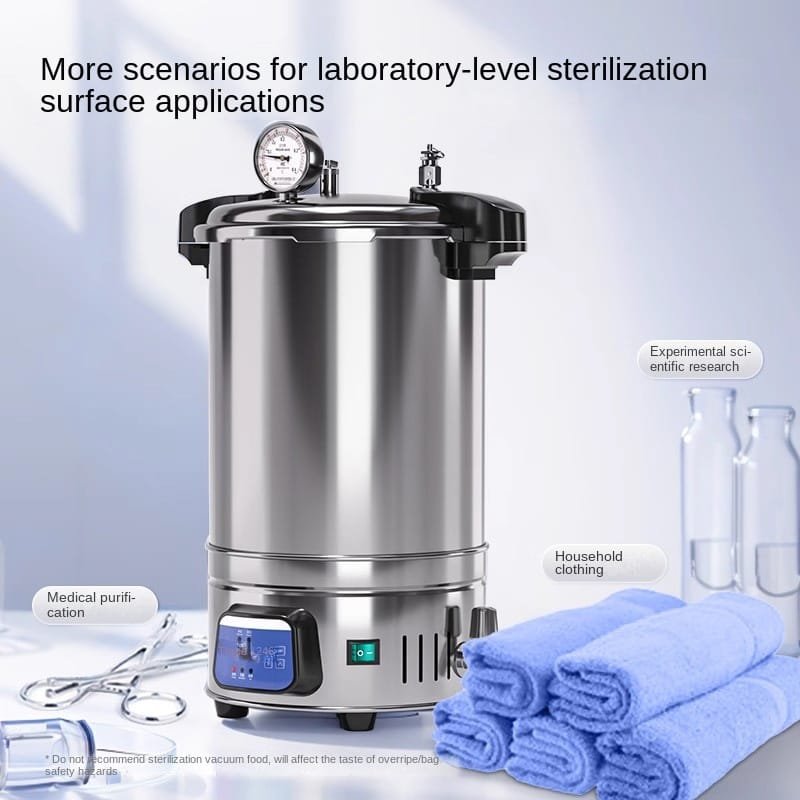
Autoclaves play a critical role in healthcare facilities and laboratories as well as industries where maintaining sterility is vital. In autoclave hospital settings autoclaves sterilize surgical tools which helps prevent infections. Gaining knowledge about autoclave fundamentals serves as the initial move towards achieving proficiency in their operation and maintenance.
The sterilization process within autoclaves relies on steam applied under pressure to destroy harmful microorganisms. Steam enters the materials and the heat denatures proteins while breaking cell membranes to kill bacteria as well as viruses and spores. The procedure enables complete sterilization which makes autoclaves critical for both medical and laboratory applications.
Moist heat sterilization achieves its highest effectiveness through the autoclave sterilization process. Autoclaving stands out as the top moist heat sterilization approach due to its rapid process and dependable nature while avoiding chemical residue. Hospitals rely on autoclave processes to sterilize surgical tools and medical equipment.
For effective sterilization within an autoclave the temperature usually falls between 121°C and 134°C. The effectiveness of autoclave sterilization relies heavily on precise control of temperature and pressure as well as time. The autoclave maintains a pressure of 15 psi for 15-20 minutes at a temperature of 121°C. The precise control of steam sterilization temperature is essential for the complete destruction of all microorganisms. The sterilization process in autoclaves typically uses a temperature of 121 °C but applications requiring different conditions may require higher temperatures.
The autoclave machines market includes multiple variants with steam autoclaves being the predominant type. Hospitals, laboratories and research facilities commonly use steam autoclaves because they deliver efficient and dependable performance. Both gravity displacement autoclaves and vacuum autoclaves exist as specialized options to meet particular sterilization requirements.
Autoclaves represent a critical component in hospital environments for the sterilization of surgical instruments and medical garments. Hospitals maintain separate autoclave rooms where strict safety protocols govern the operation of these devices. Sterilization practices safeguard patients and eliminate the risk of infections.
Items set for autoclaving require coverage with autoclave-safe bags or paper to ensure protection from contamination. Autoclave-safe bags or paper wraps protect items from contamination during sterilization. Ensure all visible debris and organic matter is cleaned off before autoclaving the material. Operating an autoclave requires proper item placement followed by setting the right temperature and pressure to achieve a successful cycle completion.
The combination of high temperature and pressure destroys microorganisms in a steam sterilizer. **How hot does an autoclave get? An autoclave usually reaches temperatures ranging from 121°C to 134°C which effectively kill most types of pathogens. The autoclave remains the most effective instrument for pressure temperature sterilization. All-purpose sterilization relies on the autoclave as the highest standard.
Conclusion Hospitals laboratories and various industries use the autoclave as an essential device for sterilization. When users comprehend the operation of autoclave sterilizers together with their sterilization process and the significance of autoclave temperature pressure they achieve effective and safe sterilization. Autoclaves provide the most dependable solution for complete microbial destruction when sterilizing surgical instruments and laboratory equipment.
CTA Learn more about how autoclaves work in our detailed guide: How Does an Autoclave Work?
Why Autoclave Is The Best Method Of Sterilization